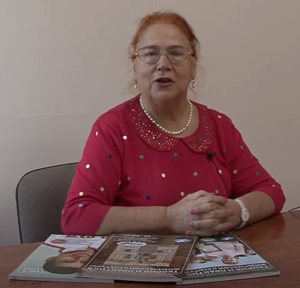Psychological mechanisms of increasing muscle dominance academician A.A. Ukhtomsky
ˑ:
Dr. Med., Professor V.N. Ananiev1
Dr. Med., Professor N.Ya. Prokopiev2
Dr. Med., Associate Professor A.M. Durov2, 3
1Institute of Biomedical Problems of the Russian Academy of Sciences, Moscow
2Tyumen State University, Tyumen
3Tyumen State Medical University, Tyumen
Objective of the study was to study the psychological mechanisms of increasing the physical performance of students.
Methods and structure of the study. The scientific work included a superficial hypnotic suggestion of students of youthful age of universities in the city of Tyumen. The method of random sampling in the gym was used to test the physical performance of 75 students in the period from 8 to 11 am before and after suggestion according to the step test PWC170.
Results and conclusions. It has been proven that after suggestion, the increase in the strength of the dominant was to a greater extent in the muscles that compress the hand (strength increased by 36.8%), physical performance according to the PWC170 test increased only by 6.42% (that is, it increased 5.73 times less than than the strength of the brush). It was shown that after suggestion the physical working capacity according to the PWC170 test increased much less than in the muscles of the hand, which we attribute to a much larger mass of muscles working during the PWC170 test. It has been proven that it is more effective to increase muscle strength by suggestion and self-suggestion, and it is necessary to start with smaller muscle groups, for example, the muscles of the hand.
Keywords: Ukhtomsky's dominant, students, hand strength, PWC-170 working capacity.
References
- Agadzhanyan N.A, Nikityuk B.N. Ot ucheniya P.K. Anokhina o funktsionalnykh sistemakh k sovremennoy integrativnoy ekologii i meditsine [From the teachings of P.K. Anokhin about functional systems to modern integrative ecology and medicine]. Vestnik Rossiyskoy Akademii med. nauk. 1999. No. 6. pp. 15-20.
- Bazyan A.S. Motivatsiya i emotsionalnyye sostoyaniya: strukturnyye sistemnyye, neyrokhimicheskiye, molekulyarnyye i kletochnyye mekhanizmy [Motivation and emotional states: structural systemic, neurochemical, molecular and cellular mechanisms]. Usp Fiziol Nauk. 2016 January-March; 47. No. 1. pp. 15-33.
- Govindaraj R., Karmani S., Varamballi S. et al. Yoga i fizicheskiye uprazhneniya - obzor i sravneniye [Yoga and exercise - review and comparison]. Int Rev Psychiatry. 2016 June; 28. No. 3. pp. 242-53.
- Grafinya P., Letizi J., de Luca J., Kline J.C. Vklad adaptatsii k zapusku motobloka i koaktivatsii myshts vo vremya ustalosti [The contribution of adaptation to the launch of a walk-behind tractor and muscle coactivation during fatigue]. J Neurophysiol. 2018 June 1; 119. No. 6. pp. 2186-2193.
- Kirzon M.V. Ukhtomskiy - uchitel (po vospominaniyam i pismam) [Ukhtomsky - a teacher (according to memoirs and letters)]. Nauchnyye doklady Vysshey shkoly biologii. 1991. No. 7. pp. 142-159.
- McComas A.J., Galea V., de Bruyne H. Populyatsii dvigatelnykh yedinits v zdorovykh i porazhennykh myshtsakh [Populations of motor units in healthy and diseased muscles]. Phys Ther. 1993 Dec;73. No. 12. pp. 868-877.
- Pavlova L.P., Berlov D.N., Kurismaa A. Otnosheniya dominanty i opponenta v funktsii kory golovnogo mozga: issledovaniye EEG uspevayemosti na ekzamene i stressa [Dominant-Opponent Relations in the Function of the Cerebral Cortex: An EEG Study of Exam Performance and Stress]. AIMS Neurosci. December 30, 2017; 5. No. 1. pp. 32-55.
- Patel-Khurana N., Fregosi R.F. Nomer dvigatelnoy yedinitsy v maloy litsevoy myshtse, rasshiritel [Motor unit number in the facial minor muscle, dilator]. Exp Brain Res. 2015 Oct; 233. No. 10. pp. 897-902.
- Said S.A., Cunningham C., Bloch R.M. Depressiya i trevozhnyye rasstroystva: polza fizicheskikh uprazhneniy, yogi i meditatsii [Depression and anxiety disorders: the benefits of exercise, yoga and meditation]. Semeynyy vrach. 2019. May 15; 99. No. 10. pp. 620-627.
- Sudakov K.V. Rezultaty i perspektivy razvitiya teorii funktsionalnykh sistem [Results and prospects for the development of the theory of functional systems]. Vestnik Rossiyskoy Akademii med. nauk. 2009. No. 8. pp. 3-11.
- Ukhtomsky A.A. Dominanta [Dominant]. St. Petersburg. 2002. 448 p.
- Shabanov P.D., Nozrachev A.D., Lebedev A.A. et al. Neyrokhimicheskaya organizatsiya podkreplyayushchikh sistem mozga [Neurochemical organization of brain reinforcement systems]. Rossiyskiy fiziol. zhurnal im. I.M. Sechenova. 2000 August; 86. No. 8. pp. 935-945.
- Shilko V.G., Potovskaya E.S., Shilko T.A. et al. Vospitaniye fizicheskikh kachestv sredstvami elementov sporta dlya organizatsii deyatelnosti cheloveka v ekstremalnykh usloviyakh [Education of physical qualities by means of sports elements for organizing human activity in extreme conditions]. Teoriya i praktika fizicheskoy kultury. 2016. No. 8. pp. 91-92.



